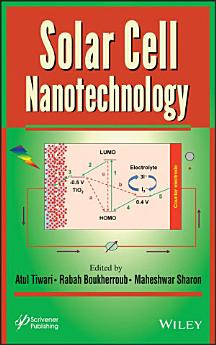Solar Cell Nanotechnology
關於本電子書
關於作者
Atul Tiwari is a research faculty member in the Department of Mechanical Engineering at the University of Hawaii. He received a PhD in polymer materials science and has been designated a Chartered Chemist and Chartered Scientist by the Royal Society of Chemistry, UK. As an organic chemist and mechanical engineer, Dr. Tiwari has sought in his research work to bridge the gap between science and engineering. His area of research interest includes the development of smart materials including silicones, graphene, and bio-inspired biomaterials for industrial applications. He has published more than 60 peer-reviewed research publications and has 6 patents or patents pending.
Rabah Boukherroub received a PhD in chemistry from the University Paul Sabatier, France. He is a group leader at the Interdisciplinary Research Institute, University of Lille, France. He is a coauthor of more than 250 research publications and has written several book chapters in subjects related to nanotechnology, materials chemistry, biosensors, and lab-on-chip devices. He has 8 patents or patents pending. Dr. Boukherroub's research interests are in the area of functional materials, surface chemistry, and photophysics of semiconductor nanostructures.
Maheshwar Sharon obtained his PhD from University of Leicester, UK, and two postgraduate diplomas in nuclear power and radio chemistry. In 1978, he joined the Indian Institute of Technology, Bombay, as a Professor in Chemistry, retiring in 2003. He is now a Research Director at the NSNR Centre for Nanotechnology & Bionanotechnology, Ambernath, India. He is a pioneer in developing plant-based precursors like camphor, kerosene, and various non-edible oils for synthesizing almost all forms of carbon: nanobeads, nanotubes, nanofibers, and various new types of carbon nanomaterials. He is the first to successfully develop a homojunction carbon (n-C/p-C) photovoltaic solar cell from camphoric carbon. He has also pioneered a solar-chargeable battery and a concept known as the Sharon-Schottky type solar cell. He has also pioneered the development of a photoactive lead oxide electrode for application in a photoelectrochemical cell. He has published more than 172 publications in national and international journals and has published 4 books.








